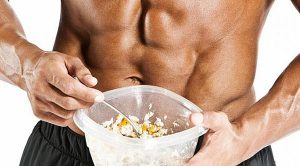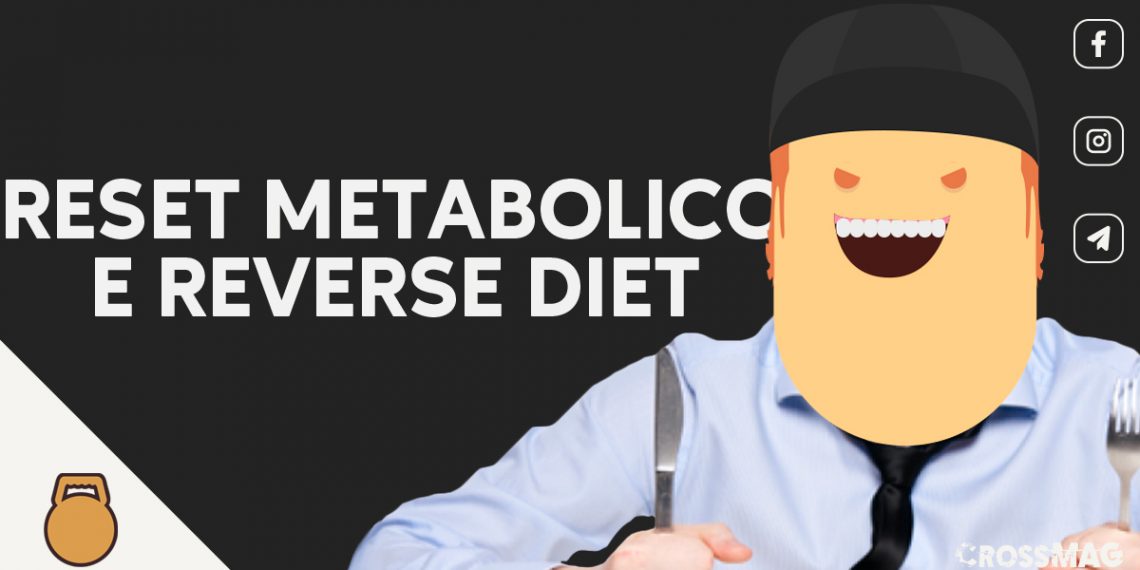The Metabolic Reset and a Reverse diet will change yours metabolism basal.
We have seen in a previous article that, to speed up the metabolism, the increase in lean body mass is a correct strategy from a physiological point of view, but not really effective in practice.
To start off, let's make a couple of points: you can bet that's the cause of your slowdown BMR is attributable to improper feeding.
First bombshell: And it could be so slowed down that you end up in the so-called metabolic block, with a calorie burning capacity comparable to that of a sleeping sloth.

If you can't lose a pound, despite eating only salad and air, you are completely en bloc. Amen.
Second bombshell: with incorrect diet, we mean hypocaloric, hypoglucidic and, tendentially, hyperproteic.
That is, few, or very few, calories, very few carbohydrates, lots of them protein. All this lasted, perhaps, for months and months. Or years and years. Forever and ever.
The regime described above causes a series of compensatory and protective adaptations in our body that lead to energy saving.
To remedy this terrible tragedy, we have, as the only alternative and last resort, proceed with a metabolic reset through one reverse diet.
Index
Metabolic Reset and Reverse Diet
Indeed, if the cause of the metabolic devastation we have caused is attributable to'diet, it should be intuitive that the solution will have to plan an intervention on the latter.
We must bear in mind that i macronutrients, i.e. carbohydrates, proteins and fats, are much more than simple constituents of food because they have extremely powerful biochemical and physiological functions, to the point that they can be compared, in a certain sense, to real hormones.
In relation to the grammages and their reciprocal distributions and proportions, they put certain genes into action rather than others at the nuclear level.
Let's restart our BMR
Therefore, it is worth evaluating all the players involved in the path to our new basal metabolic rate individually.
We should have:
- Higher percentage of lean mass: as we said, difficult to increase, true, but it should still be mentioned and pinch (made with three fingers) into consideration, increases, as much as possible, the BMR and, drastically, theepoch.
- Major andglycolytic-oxidative enzymes: put simply, they favor the transport of carbohydrates in the form of glucose towards the muscle and not towards the fat cells. Translated, energy use and not storage as storage fat.
- Greater mitochondrial density and number of mitochondria: thanks to a greater number of UCP-2,3 mitochondrial proteins, we will be better able to use the calories eaten for oxidative purposes rather than synthesis. In a nutshell, same thing as point 2.
- Greater reserves of glycogen: this is made up of branched chains of glucose and represents the source of storage and energy reserve of our body. In short, our petrol tank. When this supply is at its maximum, the production of the deiodinase enzyme is stimulated, which allows the conversion of the metabolically inactive T4 hormone into T3 hormone, which raises our BMR and favors the synthesis of the beloved UCP-2,3 proteins .
Let's dwell on it for a moment point four. Glycogen stores are increased by adequate carbohydrate intake.
Then a certainly not from a diet low carb. As far as fats are concerned, let's keep in mind that, not immediately, but in a not too long time interval, they interrupt protein synthesis, due to the oxidative damage they produce, while carbohydrates activate it.
Now, the situation should be much clearer and we should have understood why we should re-evaluate the much demonized carbohydrates and why we should invite them to lunch.
And also at dinner…
So, what strategies to apply?
Confirmed the substance relevance of carbohydrates, in our new existence, how to (re) insert them, in our nutrition, without shock and risk of psychiatric hospitalization due to uncontrolled increase in body weight?
We have to assume that we are definitely coming from an extended period of low glucose intake.
If we limit ourselves to rebalancing the polysaccharides in a single solution, we will encounter water retention and strong weight gain. Disastrous situation experienced by many who, for this reason, continue to stay hypoglucid for the rest of life.
What we will have to do is very gradually reintroduce this macronutrient through one reverse diet. We will start from a diet that is normocaloric for us, increasing carbohydrates of a value equal to 15-25 g/day every week, monitoring body weight.
In case of large increases, we will not increase for a week or more, until the new value on the balance has stabilized. Or, better still, until it decreases.
If instead, after a week of increase, the value remains constant, we will be able to increase carbohydrates by another 15-25 g/day. And so on.
This mechanism will allow our body to get used to it gradually to carbohydrates that he was no longer able to manage. Containing body weight gain to a value that should fluctuate range 2-4%, in a period that will have to last, at least, 24 weeks.
This weight increase will be the pledge to be paid to obtain, from that moment on, real, effective and lasting weight loss.
In the next article we will analyze, in detail, how to apply a reverse diet in practice.
Dr. Enzo Raco
Graduated with honors in Sport Sciences, he has been fitness manager and personal trainer manager for the largest fitness centers in Turin, for almost fifteen years.
Currently professor of sports nutrition courses, personal training and functional training for the Italian Fitness Academy, he practices the profession of personal trainer both in Turin and online.

Contacts: +39 3472551399
website: www.enzotrainertorino.it
fb: @enzotrainertorino
And finally… we have activated a lot of discounts on Amazon: from 30 to 70% on all sports categories! It's all on our dedicated channel ????
SUBSCRIBE HERE TO THE TELEGRAM CHANNEL











